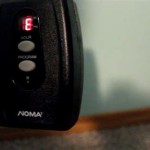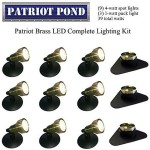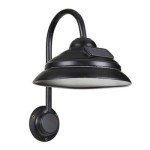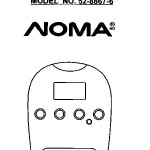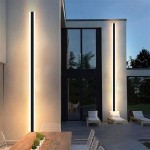```html
Outdoor Portrait Photography Lighting: A Comprehensive Guide
Outdoor portrait photography presents a range of lighting challenges and opportunities. While studio photographers have complete control over their lighting environment, outdoor photographers must contend with constantly changing natural light conditions. Understanding how to effectively manage and manipulate available light is crucial for capturing stunning and flattering portraits.
This article will explore the key principles of outdoor portrait photography lighting, providing practical advice on how to utilize natural light, manage harsh sunlight, and employ artificial lighting techniques to enhance images. We will examine various lighting scenarios and offer strategies for achieving optimal results in diverse outdoor environments.
Understanding Natural Light
Natural light, predominantly sunlight, is the primary light source for outdoor portrait photography. Its characteristics vary significantly depending on the time of day, weather conditions, and geographic location. Understanding these variations is critical for planning and executing successful outdoor portrait sessions.
Golden hour, the period shortly after sunrise and before sunset, is widely considered the ideal time for outdoor portrait photography. During golden hour, the sun is low on the horizon, producing soft, warm, and diffused light. This type of light is highly flattering, minimizing harsh shadows and creating a pleasing glow on the subject's skin. The angle of the light also adds depth and dimension to the portrait.
Midday sunlight, on the other hand, presents significant challenges. When the sun is directly overhead, it casts harsh, unflattering shadows on the subject's face, emphasizing blemishes and creating deep eye sockets. To mitigate these effects, strategies such as shooting in open shade or using a reflector to bounce light into the shaded areas are essential. Alternatively, photographers can wait for cloud cover to diffuse the harsh light.
Cloudy days offer a more consistent and diffused light source. Overcast skies act as a giant softbox, scattering the sunlight and reducing harsh shadows. While cloudy days may lack the dramatic golden light of sunrise or sunset, they provide a more forgiving environment for portrait photography. The even lighting can be particularly beneficial for capturing details and avoiding blown-out highlights.
Consider the direction of the light. Backlighting, where the sun is behind the subject, can create a beautiful rim light effect, separating the subject from the background. However, it can also result in underexposed faces. To counter this, photographers can use fill flash or reflectors to brighten the subject's face.
Managing Harsh Sunlight
Harsh sunlight, particularly during midday, poses a significant challenge for outdoor portrait photography. Without proper management, it can lead to overexposed highlights, deep shadows, and unflattering skin tones. Several techniques can be employed to mitigate the effects of harsh sunlight.
Shooting in open shade is a common and effective strategy. Open shade refers to an area that is shaded from direct sunlight but still receives ambient light from the surrounding environment. This can be achieved by positioning the subject under a tree, near a building, or in any area that blocks direct sunlight. The key is to ensure that the background behind the subject is also shaded to maintain consistent lighting across the scene.
Using a reflector is another powerful tool for managing harsh sunlight. A reflector is a portable device that bounces light back onto the subject, filling in shadows and creating a more balanced exposure. Reflectors come in various sizes and colors, each offering a slightly different effect. White reflectors provide a neutral, soft light, while silver reflectors offer a brighter, more specular light. Gold reflectors add warmth to the skin tone.
Diffusers are translucent panels that soften and diffuse direct sunlight. They are placed between the sun and the subject, reducing the intensity of the light and creating a more even illumination. Diffusers are particularly useful when shooting in direct sunlight and can significantly improve the quality of the light.
Fill flash can also be used to combat harsh shadows. Fill flash involves using a flash to add light to the shadowed areas of the subject's face, balancing the exposure and reducing the contrast. The flash should be used subtly, avoiding an overly artificial or harsh appearance. Experiment with different flash power settings to achieve a natural-looking result.
Changing the subject's position relative to the sun can also help. By slightly altering the angle, photographers can minimize the amount of direct sunlight falling on the subject's face, reducing harsh shadows and improving the overall lighting.
Utilizing Artificial Lighting Techniques
While natural light is often the preferred choice for outdoor portrait photography, artificial lighting can be a valuable tool for enhancing images and creating specific effects. Artificial lighting allows photographers to control the light, regardless of the ambient conditions.
Off-camera flash is a popular technique for adding dimension and drama to outdoor portraits. By positioning the flash away from the camera, photographers can create more interesting and dynamic lighting patterns. The flash can be used to fill in shadows, add highlights, or create a rim light effect. Off-camera flash often requires the use of radio triggers to wirelessly communicate with the flash unit.
Speedlights, small portable flashes, are commonly used for outdoor portrait photography. They are relatively inexpensive and easy to use, making them a popular choice for photographers of all levels. Speedlights can be mounted on the camera's hot shoe or used off-camera with radio triggers and light modifiers.
Studio strobes, larger and more powerful flashes, offer greater control over the light and are often used for more advanced outdoor portrait setups. They provide more power and faster recycle times than speedlights, allowing photographers to shoot at higher shutter speeds and wider apertures. Studio strobes typically require a power pack and light modifiers.
Light modifiers, such as softboxes, umbrellas, and beauty dishes, are used to shape and control the light from artificial light sources. Softboxes create a soft, diffused light, while umbrellas offer a more directional light. Beauty dishes produce a harder, more focused light that is often used for beauty and fashion photography.
High-speed sync (HSS) is a feature that allows photographers to use their flash at shutter speeds faster than the camera's sync speed. This is particularly useful when shooting in bright sunlight, as it allows for wider apertures to be used while still maintaining a proper exposure. HSS requires a compatible flash and camera.
Finally, remember color temperature. Matching the color temperature of the flash to the ambient light is crucial for achieving a natural-looking result. Using gels on the flash can help to adjust the color temperature to match the surrounding environment.
By understanding and implementing these techniques, photographers can effectively utilize both natural and artificial light to create stunning outdoor portraits in any lighting condition.
```
11 Outdoor Portrait Photography Tips For Easy Shots

Pin By David Casimer On Photography Ideas Lighting Setup Portrait Studio

11 Outdoor Portrait Photography Tips For Easy Shots

Off Flash Vs Natural Light Which Is Best For Outdoor Portraits Shutterbug

Off Flash Vs Natural Light Which Is Best For Outdoor Portraits Shutterbug

11 Outdoor Portrait Photography Tips For Easy Shots

How To Mix Ambient Light And Fill Flash For Outdoor Portraits

Reflector My Secret Weapon In Portrait Photography Oded Wagenstein

Outdoor Portraits Essentials Natural Light Photography Fill Flash Diffusers

Lighting Set Ups Portrait Photography Essentials Outdoor
Related Posts
